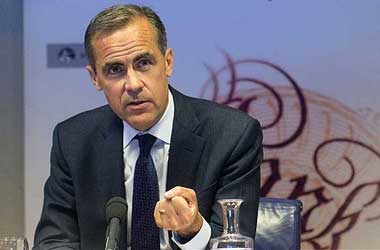 The pound remained range bound against the greenback following the release of mixed economic data from the UK. While the final GDP and revised business sentiment data was better than expectations, the sharp increase in public sector borrowing and widening of current account deficit weakened the momentum. In the last 24 hours, the GBP/USD pair remains range bound between 1.3350 and 1.3510.
The pound remained range bound against the greenback following the release of mixed economic data from the UK. While the final GDP and revised business sentiment data was better than expectations, the sharp increase in public sector borrowing and widening of current account deficit weakened the momentum. In the last 24 hours, the GBP/USD pair remains range bound between 1.3350 and 1.3510.
As per data provided by the ONS, the UK’s economy expanded (final estimates) 16% q-o-q in September quarter, after shrinking 19.8% in the June quarter. The Consensus estimates called for an economic expansion of 15.5%, unaltered from initial estimates.
Despite the rebound, the UK’s GDP still stays 8.6% below the level it stood at the end of 2019, upwardly amended from initial assessment of -9.7%. On y-o-y basis, the UK economy contracted by an amended 8.6% in September. Services, construction and production output rose by record level in 3Q20. However, the output stays below fourth-quarter 2019 (pre-pandemic level). The households’ saving ratio fell to 16.9% in 3Q20, compared with a decrease of 27.4% in June quarter.
In a separate news release, data published by the ONS indicates that public sector net borrowing increased to £30.80 billion in November, from £20.90 billion in the earlier month and greater than the net borrowing of £26.30 billion anticipated by economists.
On y-o-y basis, public sector net borrowing is £31.60 billion in November, compared with £26 billion in the similar period last year. It is highest borrowing made in the month of November and third-largest borrowing ever made since the institution started publishing data since 1993.
The UK government’s tax receipts were £38.90 billion in November 2020, down £3.20 billion compared to similar period last year. Furthermore central government organizations are anticipated to have expended £80.60 billion on every day activities in November 2020, an increase of £23.50 billion from November 2019 level.
In the initial eight months of financial year (April-November), public sector net borrowing (PSNB) was £240.90 billion, an increase of £188.60 billion in the year-ago period. It is the largest public sector borrowing in similar period since the organization started publishing data in 1993.
Public sector net debt, barring public sector banks (PSND), increased by £301.60 billion to £2,099.8 billion in the initial eight months of financial year.
Barring UK Asset Resolution Ltd and Network Rail, the UK government’s net cash necessity was £23.90 billion in November, taking the aggregate requirement in the April-November period to £284.70 billion, about three times the biggest cash necessity in the aforesaid period since the organization started reporting in 1984.
The ONS also stated that business investment increased 9.4% q-o-q in September quarter, from 8.8% reported in the initial estimates.
Data published by the ONS indicates that current account deficit widened to £15.70 billion in September quarter, from £11.90 billion in the June quarter and greater than the £12.90 billion deficit anticipated by economists.
The country’s current account deficit, barring gold and other precious metals, narrowed to £15.6 billion (2.9% of the UK’s GDP) in September quarter. The UK current account deficit, barring gold and other precious metals, widened to £15.7 billion in 3Q20.
During the third-quarter, the primary income deficit was £11.9 billion, down £7.6 billion from earlier quarter. The reported figure accounted for 2.2% of the UK’s GDP.
The UK’s net international investment position (IIP) bettered mildly by September quarter to £520.7 billion to a net liability position of £520.7 billion as the UK residents gained from a worldwide stock market rebound as investments rose in value.




